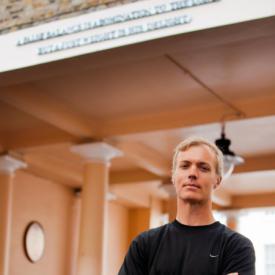Among his many teaching goals when he arrived at BYU in 2004, Professor Patrick Madden wanted to expose creative writing students to far more classical essays than they were used to (often they were used to zero), and he wanted to avoid costly, unwieldy coursepacks. His solution was an online anthology of public-domain essays (originally published before 1923) that covered the canonical authors (Montaigne, Lamb, Hazlitt, etc.) as well as lots of essayists who were nearly forgotten. With support from the English department and research assistant Joey Franklin, he adapted blogging software to provide an orderly container for hundreds of essays, including work by many women and a few minorities. In honor of the way so many essayists work from common, even mundane experiences and objects but write resplendently toward transcendence, he called his website Quotidiana.org, to suggest a collection of such oxymoronically ordinary/extraordinary writings.
The site has grown, too, to include interviews with dozens of living essayists who’ve either visited BYU or have spoken with Madden’s students over the phone, as well as irregular lists of excellent contemporary essayists selected from literary journals by students and honored as the “Essayest American Essays” of the year. 
The resource serves not only BYU but people all around the world, with hundreds of teachers and thousands of students (as well as general readers) accessing the site each month. Its popularity fosters Dr. Madden’s belief that the essay genre is not simply a quaint, stuffy relic or an assignment students perform to show their knowledge of other topics, but it’s a vibrant and still-vital literary form in its own right, one that gives great aesthetic and intellectual pleasure as it allows readers insight not only into other times and places but other minds, which can’t help but increase our empathy and wellbeing.






